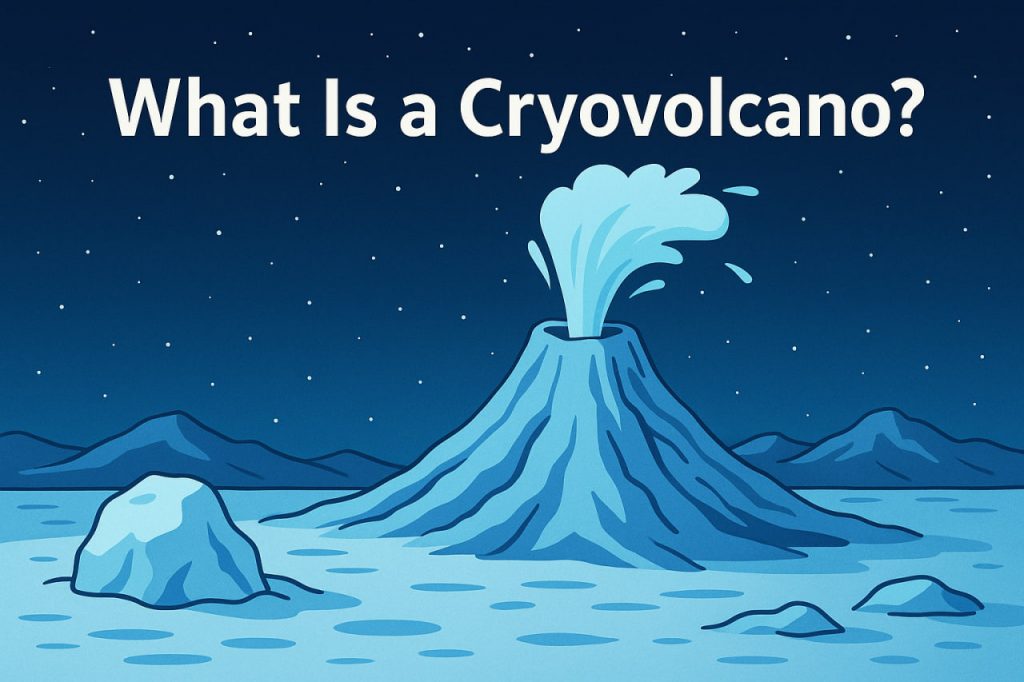A cryovolcano, also known as an ice volcano, is a type of volcanic feature found on some icy celestial bodies in our Solar System. Unlike typical volcanoes on Earth that erupt molten rock (lava), cryovolcanoes eject volatiles—such as water, ammonia, or methane—in a frozen or vaporized state. These exotic eruptions often occur on moons and dwarf planets in the outer Solar System, where temperatures are far below freezing.
How Cryovolcanoes Work
Cryovolcanoes form when subsurface liquids or slushes made of water mixed with ammonia or other compounds are heated, often by internal radioactive decay or tidal forces. These liquids build up pressure and erupt through the surface, similar to terrestrial volcanoes. However, the ejected material quickly freezes into ice due to the frigid environment.
Key differences from Earth volcanoes:
- Erupt ice, vapor, or cold slush instead of magma
- Occur in environments far from the Sun
- Often shaped by subsurface oceans or reservoirs
Where Are Cryovolcanoes Found?
Cryovolcanoes have been observed or suspected on several icy moons and dwarf planets:
- Enceladus (Saturn’s moon): Jets of water vapor and ice particles shoot from cracks called tiger stripes at the south pole. These plumes feed Saturn’s E-ring and suggest a subsurface ocean.
- Triton (Neptune’s moon): Likely hosts active cryovolcanism. Dark plumes were seen by Voyager 2, possibly driven by solar heating of surface ices.
- Europa (Jupiter’s moon): May have cryovolcanic activity related to its underground ocean.
- Pluto: NASA’s New Horizons mission revealed large domed structures that resemble ice volcanoes, such as Wright Mons and Piccard Mons.
- Ceres: The dwarf planet shows signs of recent cryovolcanism, particularly the Ahuna Mons ice dome.
Scientific Importance
Cryovolcanoes are of great interest to scientists because they:
- Indicate the presence of liquid water, a key ingredient for life
- Reveal internal heat sources in otherwise frozen worlds
- Suggest dynamic geological activity even on small or distant objects
- Provide possible access to subsurface oceans that may harbor life
In missions such as Cassini and New Horizons, cryovolcanism has been crucial in identifying potentially habitable environments beyond Earth.
Could Cryovolcanoes Exist Elsewhere?
Scientists believe cryovolcanoes could be common in other star systems as well, especially on exoplanets or icy exomoons with internal heat and water-rich compositions. Studying cryovolcanism helps us model geologic and potentially biologic processes beyond our Solar System.
Conclusion
Cryovolcanoes challenge our traditional understanding of volcanism. By erupting ice instead of fire, they show how different planetary environments can shape unique and active worlds. As space missions explore farther into the outer Solar System, these icy volcanoes may be key to discovering alien oceans—and possibly even life.
Glossary
- Cryovolcano: A volcano that erupts icy materials instead of molten rock
- Volatiles: Substances that can vaporize easily, like water, ammonia, and methane
- Tidal Heating: Heat generated by gravitational stretching of a moon by its planet
- Subsurface Ocean: A hidden liquid water ocean beneath a planet’s icy crust
- Enceladus: An icy moon of Saturn with active cryovolcanic jets


